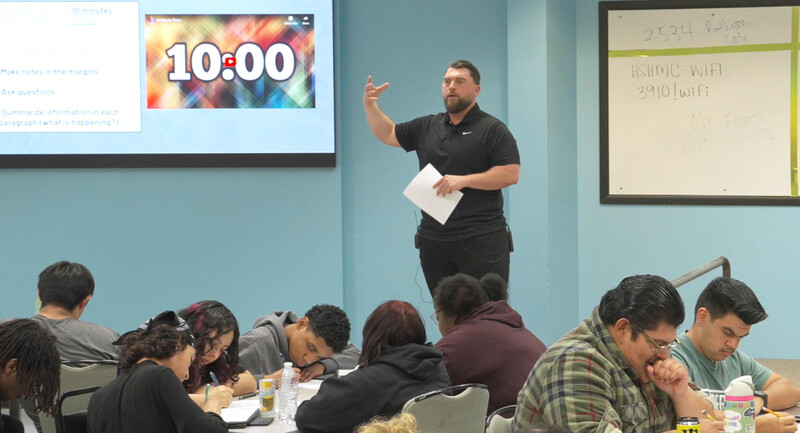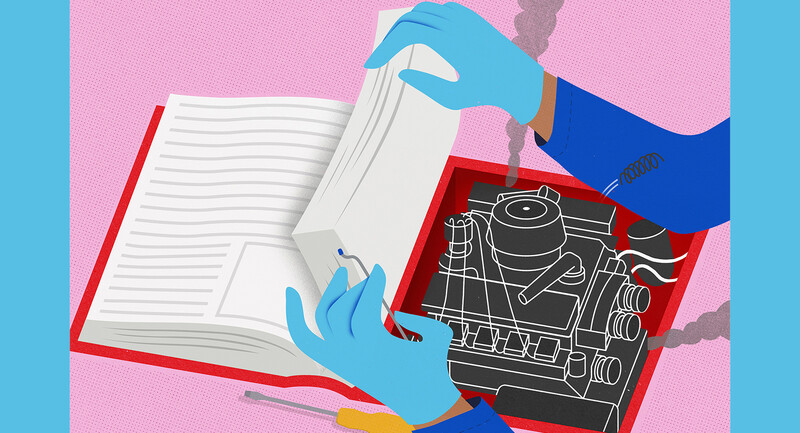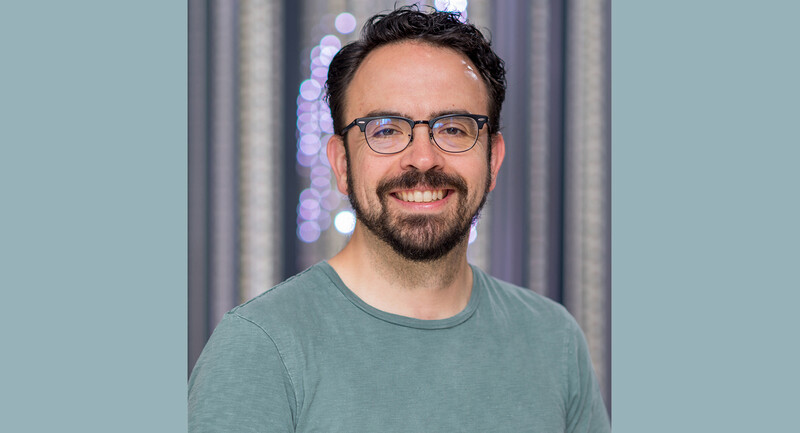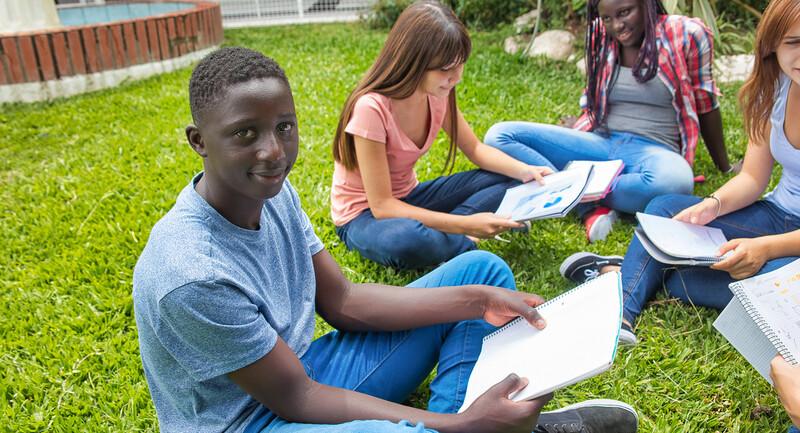Several years ago, Sam (one of the authors) was working with a 5th grade teacher on implementing a new instructional approach in her math classroom—number talks, a strategy using mental math. After developing high-quality lesson plans, the teacher implemented the strategy. At first, everything went as planned. The energy was palpable as students eagerly shared the creative ways they had solved the addition problems. A few days later, however, most students had stopped participating, even though the only change the teacher had made was having them work with slightly larger numbers.
After reflecting on this with the teacher, who was in a research study we were conducting as professors of mathematics education, we realized that the students had gone back to using a more novice approach to addition. Although they had learned more advanced strategies, their fear of making mistakes had caused them to revert to using less efficient strategies, ones they felt more confident in, even though they couldn’t apply the strategies successfully when they worked with larger numbers.
Now even though this lesson wasn’t successful, we all gained important insights. We realized that the students were more willing to try advanced strategies to solve problems only if they felt safe making mistakes. Thus, we brainstormed ways to create a classroom culture in which sharing and respecting incorrect or incomplete thinking was part of the classroom norms (Jansen, 2020). These ideas helped transform this teacher’s classroom into a vibrant community centered around discourse and exploration.
Teaching isn’t a hard science that follows unwavering rules; it’s a new experiment each and every day.
The truth is, teaching isn’t a hard science that follows unwavering rules; it’s a new experiment each and every day. When we view a lesson like this—through the frame of continuous improvement—we enhance teacher autonomy. We create judgment-free zones that celebrate learning and growth. Instead of labeling individual lessons in isolation as good or bad, we look at them as a journey. Working to this end means reconceptualizing instruction to create a culture of rough draft teaching; here, the act of teaching is not considered as a single finished product, but rather as an ongoing rough draft for a teacher to continually improve.
Lessons from Lesson Study
We see the concepts of rough draft teaching in lesson study, a highly effective professional learning program commonly practiced in Japan. Teachers collaborate to develop a research lesson through a cyclical process that has three main phases: study and plan, teach, and reflect and revise (Takahashi & McDougal, 2016). The focus of lesson study is to identify problems of practice and then propose instructional strategies to address those problems. For example, the problem of practice in the vignette about number talks was, How can I maintain high student engagement while increasing the rigor of problems?
Once they identify a problem of practice, teachers research the topic (e.g., by reading books and articles on the topic from reputable sources). Next, they meet with their peers to brainstorm possible solutions to the problem of practice, and then they collaborate to create rough draft lesson plans that are grounded in the research they reviewed. They will continually improve these lessons through a judgment-free process of teaching, reflection, and revision.
What makes lesson study so effective? It’s grounded in the Japanese concept of Kaizen, or continuous improvement. The focus is on improving over time to become a master of one’s craft. Thus, a lesson plan isn’t a finished work that needs to be perfect. Instead, it’s just one iteration. When teachers view a lesson plan through the lens of rough draft teaching, instead of being fearful of being poorly judged or harshly assessed, they’re free to think and experiment; they acquire the autonomy to realize their visions of teaching that drew them to the profession in the first place. For example, the teacher in the opening vignette dreamed of teaching in ways that encouraged her students to think creatively and to share and discuss their thinking. Having the freedom to teach in rough draft ways allowed her to try number talks and to continue to revise her instruction even when it didn’t initially go as envisioned.
A Closer Look at Rough Draft Teaching
Let’s consider the various components of this cyclical process and how it might transform evaluation.
Rough Draft Planning and Teaching
The journey of rough draft teaching starts with the freedom to ask questions. Indeed, X, a division of Google (2023), has continually pushed the boundaries of innovation by formulating such questions as, What if beams of light could provide global access to fast, affordable Internet? We ask questions like these in our methods courses: What would teaching look like if every teacher had the autonomy to enter into lesson planning by posing questions that push the boundaries of teaching and learning? How would education change if teachers felt safe trying new instructional approaches, even if that meant changing pacing guides?
To ask such questions and integrate them in a teacher’s planning practice, we need to shift from “improving teachers” to “continuously improving teaching” (Hiebert & Stigler, 2017). This focus not only makes teachers partners in improving their teaching, but also enables them to deprivatize their practice; the focus of critique is not on the teacher, but on improving the lesson or instructional strategy.
This shift in thinking about the act of teaching as a rough draft—and not a finished product—also increases teachers’ agency and autonomy. Instead of thinking of a lesson as a performance that needs to follow a set script, teachers can adapt the lesson to the needs of their students. This may involve connecting mathematics to students’ lives or addressing student misconceptions. This level of agency also demands much work after the lesson is over because teachers will need to reflect on that lesson and evaluate their instruction. This begins a cyclical “teach, reflect, and plan” process.
You might wonder why teaching comes first and planning last. Although planning happens before teaching as well, we wanted to emphasize that rough draft teaching doesn’t stop with reflection; most of the improvement of the lesson will come from turning robust reflections into cogent plans to guide future teaching. This improvement cycle also has repercussions on evaluation, which we view as more holistic—taking in the body of a teacher’s work as opposed to focusing on a single snapshot of that work.
Rough Draft Reflection and Revision
Research has shown that one of the most important parts of any learning experience is the reflection that occurs at the end (Zelazo, 2015). This is true for teaching, too. In fact, one could argue that the heart of teaching is what occurs after a lesson has been taught. That’s when teachers can think deeply about what aspects of the lesson were well-aligned to their vision and where other aspects may have fallen a bit short on the journey toward improvement. That is, teachers don’t reflect on the lesson as being either good or bad, but rather, in terms of its progress.
When aspects of a lesson don’t go as envisioned, we don’t consider these as failures. Instead, we reposition them as problems of practice (Horn & Little, 2010) to target in the planning phase of the very next lesson. These problems can highlight instructional practices that teachers should work on improving, such as asking better questions, or even more specifically, asking questions to help students engage in productive struggle. During this next planning phase, teachers will work collaboratively with their peers to develop ways to improve their identified problem of practice.
Rough Draft Evaluation
When faced with trying new instructional techniques, teachers often worry about what will happen if the lesson doesn’t go as well as planned—if their students’ test scores will drop, or if they’ll get behind in the pacing guide. Although such concerns are valid, we need to position them as considerations, rather than as barriers or unacceptable risks. As the opening vignette illustrates, an instructional approach might go beautifully one day and may leave us frustrated and confused the next. But we can learn from these scenarios and develop better understandings of our students and sounder instructional decisions that more effectively meet their needs.
Unfortunately, such benefits can become obscured when the focus of teacher observations is on retrospective evaluation—codifying judgments of past instruction. Conversely, using observations to engage in reflexive ideation—collaboratively brainstorming ways to improve future iterations of the lesson—preserves teacher autonomy and creates a culture of continuous improvement. The preservice teachers in our methods courses are eager to talk about why they want to be teachers, but they’re also concerned that they’ll teach in environments that won’t allow them to realize their visions. Thus, teacher autonomy—the ability to make decisions based on the long-term best interests of their students—depends on teachers feeling safe taking risks in the short term, knowing that they won’t receive poor evaluations on their rough draft instruction.
Creating such a culture requires us to reimagine our model of evaluation. In their seminal work on coaching, Bob and Megan Tschannen-Moran (2020) picture teacher improvement as a continuous flow of improvement in an environment that is empathetic and supportive, rather than judgmental and disillusioning. For example, instead of judging isolated lessons as good or poor, what would happen if we considered those lessons based on the entirety of the journey, with the destination counting as much as the teacher’s current position on that journey? Instead of observing teachers and giving them the typical glows and grows, what would happen if observers used observations to listen, empathize, collaboratively brainstorm future teaching experiments, and create systems that supported those experiments? Instead of entering the teaching space as the expert, what if observers went in listening to the dreams and aspirations that the teacher had for a lesson and then worked with that teacher to move the journey forward?
The Game Goes On
We can classify many aspects of our world as either a finite game—a game with defined rules and a clear end where we can declare winners and losers—or as an infinite game—a game that has no end and where one can decide whether or not to play (Sinek, 2019). We see teaching and learning as infinite games in which the goal is to never stop learning, never stop improving, and never stop playing.
We see teaching and learning as infinite games in which the goal is to never stop learning, never stop improving, and never stop playing.
Unfortunately, too often education is treated like a finite game in which students and teachers are declared winners or losers based on grades, evaluations, and performance on high-stakes tests. The result is that both teachers and students often feel like they’re on trial, with test scores and evaluations the verdicts. In such a culture, teachers rarely feel safe to exercise autonomy and take risks to try new things.
To change this narrative, we must draw on the positive effects of teaching through models of continuous improvement (Takahashi & McDougal, 2016) and shift toward a culture of rough draft teaching. Just as students need to learn in an environment in which they feel safe sharing their rough draft thinking (Jansen, 2020), teachers need to feel safe taking risks and teaching imperfect lessons. Thinking back on our own teaching careers, our most effective lessons were those we spent the most time revising after having taught them, making the lessons going forward dramatically more effective.
We need to give teachers agency to enter into a world of possibility (Tschannen-Moran & Tschannen-Moran, 2020), into a world in which they feel empowered to pursue the dreams and passions that led them into teaching to begin with—into a world of rough draft teaching.
Reflect & Discuss
➛ How would your teaching change
if it were “a new experiment each
and every day”?
➛ What elements of rough draft
teaching do you already practice?
What new element can you add?
➛ Does your classroom or school
offer judgment-free zones that
celebrate learning and growth?









